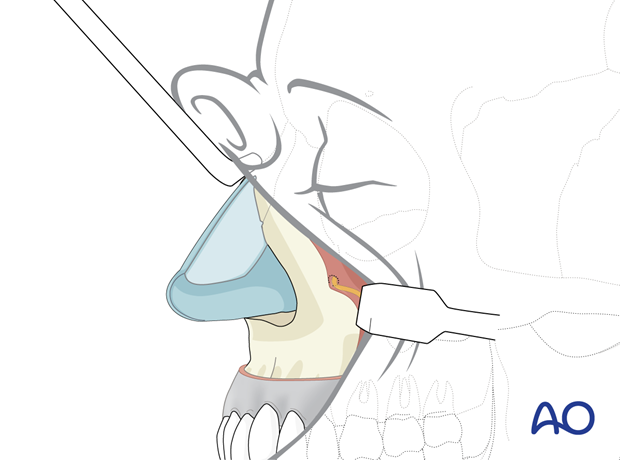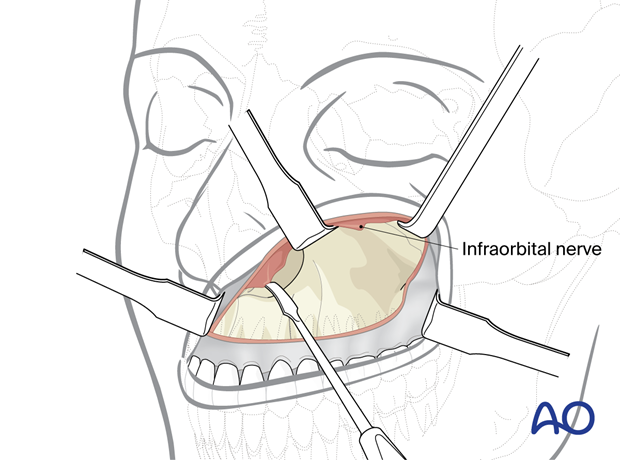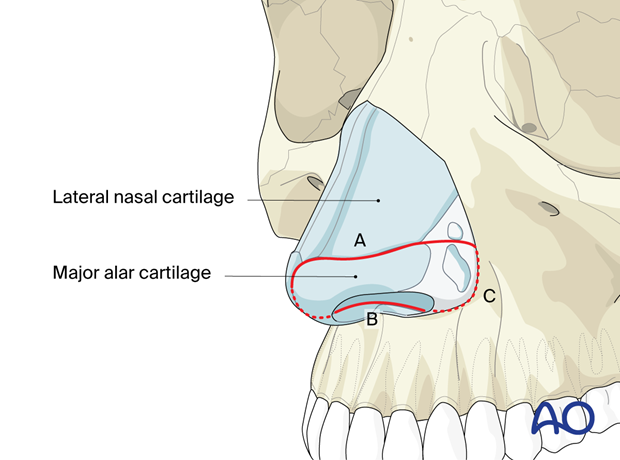Midfacial degloving approach
1. Overview
The midfacial degloving approach is usually performed in three steps:
- Bilateral maxillary vestibular approach and subperiosteal dissection
- Circular incision of nasal entrance
- Degloving of the nose, nasal radix, and ethmoid region

2. Bilateral maxillary vestibular approach and subperiosteal dissection
This technique is described in the maxillary vestibular approach.
Read a step-by-step description of the maxillary vestibular approach.

3. Circular incision of nasal entrance
The circular endonasal incision and soft-tissue dissection is achieved using a combination of three techniques:
- Intercartilaginous incision (A)
- Transfixion incision (B)
- Incision of the nasal floor along the piriform aperture (C)
The illustration shows the soft-tissue situation after the endonasal circular dissection. The upper lateral cartilages are left in place connected over the anterior septal border and linked to the cranial margin of the piriform aperture.

4. Degloving of the nose, nasal radix, and ethmoid region
After intranasal freeing, the soft-tissue envelope over the nose and the midface can be lifted in a subperiosteal and subperichondrial plane all the way up into the ethmoid region.














